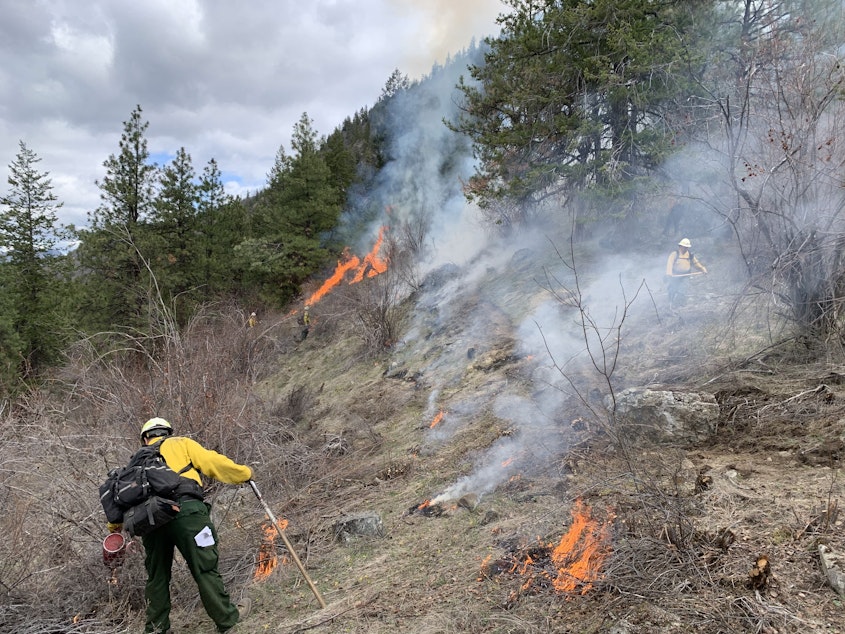Washington is starting new prescribed burns. Will they prevent bigger wildfires?

It's been close to two decades since Washington state last did a "broadcast burn," a kind of prescribed burn that sweeps forest floors of potential fire fuel.
Prescribed burns are gaining in use throughout fire-prone states as land managers look to imitate natural cycles and move away from a "no-burn" standard of management.
Kate Williams, prescribed burn planner for the Department of Natural Resources' prescribed burn program, says new burns will help preserve forests.
"Overall, you're going to notice that those blackened and burned spots will quickly be replaced by new plant growth and wildlife, most likely taking advantage of those new habitats," Williams said.
NOTE: KUOW reported on the state's prescribed burn program earlier this year. You can read and listen to that in-depth report by clicking here.
A pile burn is when dry fuel like leaves, nettles, branches, and brush is collected and burned in a single pile. Broadcast burns are started by crews of around 20 people carrying drip torches, which puts dots of fires onto the landscape. This allows for crews to cover broader areas by simulating a low-level fire. Trees in dry regions of the state, like ponderosa pines, thrive on this kind of fire clearing.
Crews have to work in weather windows to ensure proper conditions for a burn. Too wet and fuels won't catch. Too much heat and dryness can fuel fires out of control. But weather can be hard to predict, which can mean delays in prescribed burns.
Earlier this spring, a burn planned outside Springdale, northwest of Spokane, was delayed by rain for five weeks.
"This spring, we went from snow pretty much straight to rain to hot conditions, and that's not ideal for what we'd like to see for burning," explained Williams. "With climate change increasing variability and conditions, we are seeing more limited windows for some of our land managers."
A handful of prescribed burns are planned this fall, largely located in drier regions of southeast and northeast Washington. The program's target is 1,000 acres burned by the end of this year, and Williams explained that they're hoping for a productive fall after a slow and wet spring.
"Going forward in the next few years, starting with those 1,000-acre targets is going to be a really strong way to build our program, gain experience, and start to build some of those collaborative bridges," Williams said.
Listen to Soundside's full conversation with Kate Williams by clicking the audio above.





